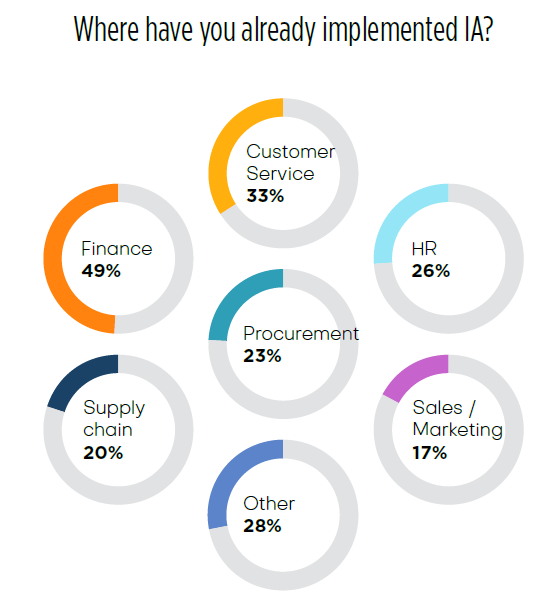Financial applications are leading as a priority for and implementation of intelligent automation in the enterprise, according to a new report from Shared Services Outsourcing Network (SSON). It has been half a dozen years or so since Robotic Process Automation (RPA) first entered the shared services vocabulary. In the intervening time, SSO (Shared Services and Outsourcing) leaders have recognized the value of what started out as task automation and steadily extended into what is now referred to as intelligent automation (IA).
The addition of machine learning and artificial intelligence into the mix has meant that the type of work handed over to bots has become increasingly complex, leveraging “human-like” intelligence (generally still based on pattern recognition, but this, too, is changing).
The pandemic has significantly accelerated the adoption of IA by highlighting the risks associated with location-specific delivery models and relying extensively on humans for transactional work.
This report, based on a global IA survey conducted in Q2, provides a comprehensive and clear line of sight over how well organizations are leveraging current intelligent automation opportunities, and how they plan to shift strategies in the year ahead. Specifically, it outlines how they are accelerating their automation agendas.


Data strategy
The growth in data continues to boggle the mind: 90% of all data in existence in the world was created in the past two years. Worldwide data is expected to hit 175 zettabytes by 2025, representing a 61% CAGR. 51% of the data will be in data centers and 49% will be in the public cloud. This monstrous growth is both an issue and an opportunity.
Technology leaders who figure out how to use it to maximize operational efficiency, customer experience and product innovation will experience lasting competitive advantage. In the recent past, attempts at creating data strategies to proactively harness data have seen mixed success. That’s where a practical approach to data strategy is important.
Here are a few key points every practitioner should be aware of:
- We have all heard that data strategy must be inextricably tied to business strategy, but one of the most common mistakes made it to have that link be loose. Data sources, data usage and even data type evolution should depend critically on ownership within the business.
- How exactly business goals are translated into action in a data-driven enterprise, depends on the three components of data, processing intelligence, and operations. These three help us figure out the gap between where we are today and what needs to change in order to get to the eventual goal of being a data driven enterprise.
- It’s critical to be aware of how data architecture has changed dramatically in the past few years. Today’s objectives of enabling the whole enterprise by leveraging data as the foundation for business models, new products and entire business operations requires a totally different approach to data strategy.
- Think creatively when it comes to identifying the right data sources for your business. More is not necessarily better. Collect data that’s relevant to your use cases. A much better approach is to focus on Smart Data, rather than “all” data.
- Leading practitioners appear to have common messages about what’s helped them be successful. The recurring theme of business focus and relevance is hard to miss. The second theme is one of being human-centric in all the data strategy work.
In the not too distant past, data used to be an exhaust of business operations. Today, it’s the fuel for the most successful business models. The implications for strong data and technology practitioners is clear: lead the way on a common-sense data strategy and influence the business through it. There’s no future without data becoming a core asset of the enterprise.

